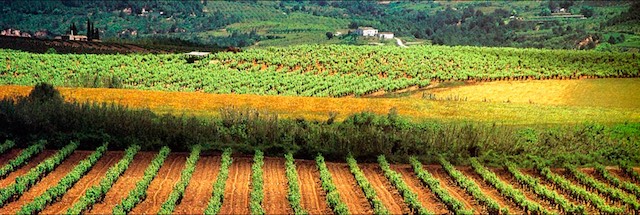Posted: Feb 15, 2018

Cava profile
While it may seem apt to compare Cava to Prosecco as they are often found at similar price points, it shares more in common with classic sparkling wine production such as Champagne or Franciacorta in that it is made in the ‘traditional method’ with secondary fermentation in the bottle as opposed to the tank fermentation used in Prosecco.
Young vs Old
While younger wines can be crisp and fresh, it’s in the aged wines where this method of production lends lovely creaminess and lingering, nutty autolytic notes with boundless complexity.
The rules
A key difference in Cava is that the Denomination of Origin is actually given to the process of making the wine instead of a specific place or region as is seen in other sparkling wine appellations.
While 95% of all Cava production is focused in Catalonia and of that, 90% specifically in the Penedès area, there are seven other provinces in Spain where it can be produced.
When digging in to the full range of Cava there are a great many styles to be found but it can be easily perceived as a “budget” sparkling wine.
Given this, there has been a great deal of activity by the DO and producers to promote their mid and upper range bottles.
For example, the top end Cava de Paratge that is designed to help to demarcate a range of Cavas and has existed for some time, but it hasn’t been immediately obvious to the wine drinker, that are single-vineyard wines with unique characteristics.
In 2017, the first twelve Cava wines were allocated the ‘Cava de Paraje Calificado’. They meet specific criteria, including vines being at least 10 years old, lower yields and 36 months bottle ageing on the lees.
The grapes
There are many grapes that can be used in Cava, including a number of international varieties such as Chardonnay or Pinot Noir.
Three Catalan grapes provide the backbone of most Cava production: Macabeu, Parellada, and Xarel·lo.
Like Chardonnay, Pinot Noir, and Pinot Meunier of Champagne or Glera of Prosecco, these grapes have come to define the classic Cava profile.
Macabeu is seen to give the wines fresh fruitiness, Parellada gives aroma and acidity, and Xarel·lo, the structure.
Ageing and ‘serious’ Cava
With time, there are more varietal Cavas being created with only the Xarel·lo grapes as it’s able to stand quite admirably on its own and make sparkling wines that can age for decades. Some producers have been quoted as saying that ‘The ultimate ageing potential of Xarel·lo is yet unknown’.
Cava sits poised to raise its profile greatly in the coming years. While it will always be a wine easy to pair with countless dishes due to its vibrant acidity, there are many cellars ready to show that, 900km south of Champagne, serious bubbly can be produced as well.
By Miquel Hudin
February 15, 2018
In partnership with ARAEX Grands
Source and Complete Article at: Decanter.com
Image source: DOCava.es
Go-Wine's mission is to organize food and beverage information and make it universally accessible and beneficial. These are the benefits of sharing your article in Go-Wine.com


The Wine Thief Bistro & Specialty Wines is a locally owned small business in downtown Frankfort, IL offering world class wines in a relaxed, casual gathering spot for friends and family. Offering world class virtual tastings and touchless carryout.
https://www.twtwineclub.com/aboutus
Go-Wine 25 Great Wineries in US selection prioritizes quality, value and availability.
www.go-wine.com/great-wineries-in-america
Tasting wine is a nice experience, but visiting the places in which wine is made is a magic moment. Available in New York City for touchless pickup.